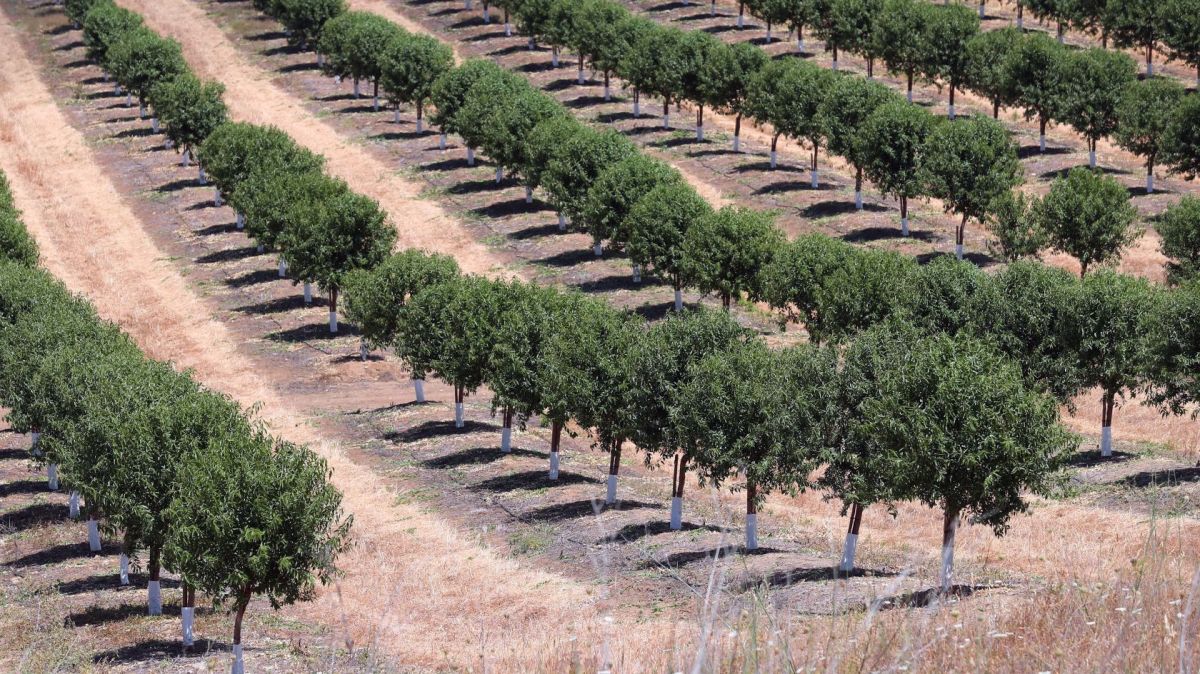Tumbleweeds - sometimes called a hay ball or bush ball - are immortalised on the silver screen in desert scenes, dry, sandy and rocky plains, tumbleweeds, maybe the odd ‘cowboy cactus’ (so called because it looks like it has arms thrown up in submission growing upwards from its sides) decorating the scene. Dry, dusty terrain with a horse and rider struggling along a boulder-strewn track, probably looking for water.
I have horrible visions of Southern Portugal turning into a scenario such as this if we don’t get some decent rain soon – we have both climate change and water shortages to contend with as temperatures go up and water levels go down. The land might be reclaimed by sand and rock, the plants may die off, people might start to move north, and here will be a barren location for another Wild West movie scenario. Well maybe not next week, but you know, sometime in the distant future. But by the time this goes to print we may have had more rain than we can contend with!
This is really just my imagination working overtime, but the tumbleweeds you see rolling across those American plains are actually real plants – or were before they started tumbling and rolling randomly across an inhospitable scene.
How Did Tumbleweeds Get There?
The truth about tumbleweeds isn’t simple. They may be symbols of the Wild West, but tumbleweeds are an invasive weed called Russian thistle, and many modern-day Westerners fear they’re taking over.
Like many invasive species, the plucky tumbleweed hitchhiked with unwitting travellers. In 1873, Russian immigrants arrived in South Dakota carrying flax seed that was apparently contaminated with Russian thistle seeds (Salsola tragus). Once sown, these invaders quickly sprouted, unhampered by natural predators and diseases to keep them in check. Each winter after Russian thistle plants die, the brittle bushy parts snap off at the roots and blow away, dispersing seeds wherever they tumble - an enormous estimate of around 250,000 per plant. By bouncing and rolling in the wind, the tumbleweed spreads its seeds so that they all get plenty of sunlight and space. In reality, they’re not only just a noxious weed but one that can overwhelm entire neighbourhoods, piling up against walls and fences and becoming a threat for drivers on the roads and a real nuisance for farmers.
Because it needs little water, it was able to quickly take hold in the vast agricultural fields and overgrazed lands in the American West. By the end of the 1800s, this intruder had already rolled its way across most western states and into Canada, carried by the wind and even hitching a ride on railroad cars.

Tumbleweeds were real plants
We rarely think of them as living bushes, which might be considered beautiful - they have reddish-purple striped stems, tender leaves, and delicate flowers. Growing 15cm to over 90 cm tall, they later develop sharp spines. A microscopic layer of cells at the base of the plant — called the abscission layer — makes a clean break possible and the plants happily roll away, spreading their seeds as they go.
Ironically, many animal species and birds feed on the succulent new shoots, and Russian thistle hay actually saved cattle from starvation during the Dust Bowl of the 1930s when other feed wasn’t available.
But the downside to tumbleweeds is they never stop spreading. Nearly every state in the US is now home to the Russian thistle, as well as several newer tumbleweed species that have arrived as immigrants from around the world.
The ongoing drought out West is a particular boon for these ubiquitous raiders, launching an explosion of prickly spheres around the place. A newer tumbleweed species, Salsola ryanii, is being referred to as ‘monster tumbleweed.’ While scientists believed it would go extinct, it's actually expanding and causing worse issues in more areas - because it's a hybrid of two other types of tumbleweed, it grows more vigorously, and can reach up to over 180cm tall.
Let’s hope they don’t take root here.
Marilyn writes regularly for The Portugal News, and has lived in the Algarve for some years. A dog-lover, she has lived in Ireland, UK, Bermuda and the Isle of Man.


















I have often thought that the Rush Skeleton Weed (Chondrilla juncea) that does grow in Portugal looks a lot like a tumbleweed. It also thrives in arid conditions and is well-adapted to heatwaves and drought. This plant does well in sandy soil too and its seeds are spread by the wind. I see a lot of it about in the Quinta do Conde area I live in.
By Steve Andrews from Other on 19 Oct 2023, 11:27